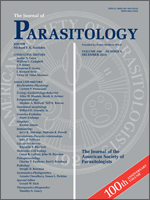The objective of the current study was to establish an in vitro screen and a highly sensitive analytical assay to delineate key physicochemical properties that favor compound bioaccumulation in the L3 life stage of a Haemonchus contortus isolate. Time-dependent studies revealed that absorption and elimination kinetics during the first 6 hr of exposure were sufficient to achieve maximum bioaccumulation for the majority of compounds tested. In subsequent studies, the larvae were incubated for 6 hr in a medium containing 146 compounds (5 μM initial concentration), including both human and veterinary medicines, characterized by a broad range of physicochemical properties. Bioaccumulation of the compounds by the nematodes was determined, and multiple physicochemical descriptors were selected for correlation. Data analysis using Bayes classification model and partial least-square regression revealed that clogD7.4, rotatable bond, E-state, and hydrogen bond donor each correlated with compound bioaccumulation in H. contortus L3. The finding that lipophilicity was critical for transcuticle compound permeation was consistent with previous studies in other parasitic species and in adult H. contortus. The finding of additional physicochemical properties that contribute to compound conformational flexibility, polarity, and electrotopological state shed light on the mechanisms governing transcuticle permeation. The relatively poor correlation between transcuticle and transmembrane permeation indicated the distinct mechanisms of compound permeation, likely due to the different constituents, and their contributions to overall transport function, of the lipid membranes and the porous collagen barrier of the nematode cuticle. Our study, for the first time, establishes a high-throughput screen for compound bioaccumulation in a parasitic nematode and further elucidates physicochemical factors governing transcuticular permeation of compounds. Application of this methodology will help explain the basis for discrepancies observed in receptor binding and whole organism potency assays and facilitate incorporation of drug delivery principles in the design of candidate anthelmintics.
How to translate text using browser tools
1 December 2014
Development of an in Vitro Screen for Compound Bioaccumulation in Haemonchus contortus
Xin Zhou,
Jinxia Nancy Deng,
Bernard D. Hummel,
Debra J. Woods,
Wendy T. Collard,
Steven X. Hu,
Matthew J. Zaya,
Christopher S. Knauer,
David P. Thompson,
Dawn A. Merritt,
Julie K. Lorenz,
Alan A. Marchiondo
ACCESS THE FULL ARTICLE

Journal of Parasitology
Vol. 100 • No. 6
December 2014
Vol. 100 • No. 6
December 2014




